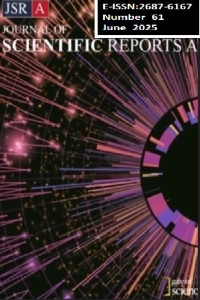Abstract
This study focuses on ZEKA, a time-saving utility calculation program for researchers using the Gaussian 03, Gaussian 09 and Gaussian 16 molecular modeling and calculation programs. The magnetic, vibrational, electro-optic, some NLO and NBO properties of the compound whose structure is resolved with the Gaussian program are calculated by taking the necessary data from its .log output file and placing them in the relevant formulas. The ZEKA utility program completes such calculations in a very short time interval of approximately 300-400 milliseconds (ms) for an average-sized molecular structure, depending on the size of its log file. These processes require the researcher to spend a lot of time on this work. In addition, the fact that the calculations are performed by the human factor may cause some unwanted errors. The ZEKA utility program will enable researchers to both make the best use of their limited time and prevent errors caused by human factors.
Keywords
Gaussian molecular modeling program Gaussian calculation program structural properties of compounds Gaussian output file (.log) ZEKA utility program
References
- [1] D. C. Young, Computational Chemistry. Wiley-Interscience, 2001, Appendix A. A.3.1 pp. 341, AMPAC, doi: 10.1002/0471220655.app1.
- [2] S. J. Clark et al., “First principles methods using CASTEP,” Z. Kristallog., vol. 220, no. 5-6, pp. 567-570, 2005, doi: 10.1524/zkri.220.5.567.65075.
- [3] R. Dovesi et al., “Quantum‐mechanical condensed matter simulations with crystal,” WIREs Comput. Mol. Sci., vol. 8, no. 4, 2018, doi: 10.1002/wcms.1360.
- [4] G. M. J. Barca et al., “Recent developments in the general atomic and molecular electronic structure system,” J. Chem. Phys., vol. 152, no. 15, pp. 154102, 2020, doi: 10.1063/5.0005188.
- [5] M. J. Frisch et al., Gaussian 03 Revision D.01. Gaussian. Inc., Wallingford CT (2004).
- [6] J. J. Stewart, “MOPAC: A semiempirical molecular orbital program.” J. Comput. Aided Mol. Des., vol. 4. no. 1, pp. 1-105, 1990, doi:10.1007/BF00128336.
- [7] A. García et al., “Siesta: Recent developments and applications.” J. Chem. Phys. vol. 152, no. 20, 2020. 204108, doi:10.1063/5.0005077.
- [8] D. C. Young, Computational Chemistry, Wiley-Interscience, 2001, Appendix A. A. 1.6 pp 330, Spartan, doi: 10.1002/0471220655.app1.
- [9] Z. Kartal and O. Şahin, “Synthesis. X-ray crystallography characterization and DFT theoretical studies of a new metal compound [CdCl2(4-aminopyridine)2]n,” J. Mol. Struct., vol. 1243, 2020, 130720, doi:10.1016/j.molstruc.2021.130720.
- [10] Z. Kartal and O. Şahin, “Synthesis of two Hofmann type and Hofmann-type-like compounds in crystal form from 4-aminopyridine and their characterizations by various methods,” J. Mol. Struct., vol. 1252, 2022, 132088, doi: 10.1016/j.molstruc.2021.132088.
- [11] Z. Kartal and Z. S. Şahin, “Synthesis and characterization of two new Hofmann-Type-Like compounds from some alkali metal atoms and glycine anhydride,” JOTCSA, vol. 11, no. 1, pp. 125-36, 2024, doi: 10.18596/jotcsa.1368425.
- [12] Z. Kartal and Z. S. Şahin, “Crystal structure and Hirshfeld surface analysis of a heterometallic Hofmann-type-like compound,” Sinop Univ. J. Nat. Sci., vol. 9, no. 1, pp. 72-95, 2024, doi: 10.33484/sinopfbd.1370598.
- [13] D. A. Kleinman, “Nonlinear Dielectric Polarization in Optical Media,” Phys. Rev., vol. 126, no. 6, pp. 1977-1979, 1962, doi: 10.1103/PhysRev.126.1977.
- [14] H. A. Kurtz D. S. Dudis, “Quantum Mechanical Methods for Predicting Nonlinear Optical Properties,” Reviews in Computational Chemistry, vol. 12, K. B. Lipkowitz. D. B. Boyd. Ed., New York. USA: VCH Publishers, 1998, pp 241-279.
- [15] M. G. Vivas D. L. da Silva, C. R. Mendonca, L. De Boni, “Chapter 8 - First-order hyperpolarizability of organic molecules: hyper-Rayleigh scattering and applications.” Molecular and Laser Spectroscopy. V.P. Gupta. Yukihiro Ozaki. Ed., Elsevier, 2020, pp. 275-314, doi: 10.1016/B978-0-12-818870-5.00008-3.
- [16] Ö. Tamer et al., “First and second order hyperpolarizabilities of flavonol derivatives: A density functional theory study,” Spectrochim. Acta. Part A, 283, 2022, 121728, doi: 10.1016/j.saa.2022.121728.
- [17] A. B. Ahmed, H. Feki, Y. Abid, H. Boughzala, A. Mlayah, “Structural. vibrational and theoretical studies of l-histidine bromide,” J. Mol. Struct., vol. 888, no. (1-3), pp. 180–186, 2008, doi:10.1016/j.molstruc.2007.11.056.
- [18] M. Nakano et al., “Second hyperpolarizability (gamma) of singlet diradical system: dependence of gamma on the diradical character,” J Phys Chem A., vol. 109, no. 5, pp. 885-891, 2005, doi:10.1021/jp046322x.
- [19] Z. Kartal and O. Şahin, “Synthesis, spectroscopic, thermal, crystal structure properties and characterization of new Hofmann-type-like clathrates with 4-aminopyridine and water,” Turk. J. Chem., vol. 45, no. 3, pp. 616–633, 2021, doi:10.3906/ kim-2011-29.
- [20] Z. Kartal and O. Şahin, “The synthesis of heteroleptic cyanometallate aminopyridine complexes and an investigation into their structural properties with various spectroscopic methods.” J. Mol. Struct., 2021, 1227, 129514, doi:10.1016/j.molstruc.2020.129514.
Details
| Primary Language | English |
|---|---|
| Subjects | Atomic and Molecular Physics |
| Journal Section | Research Articles |
| Authors | |
| Publication Date | June 30, 2025 |
| Submission Date | December 18, 2024 |
| Acceptance Date | April 8, 2025 |
| Published in Issue | Year 2025 Issue: 061 |


